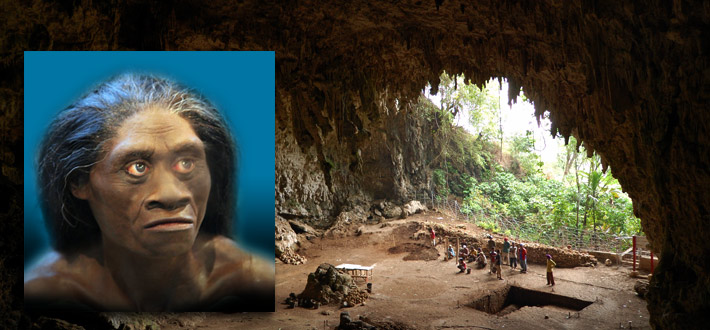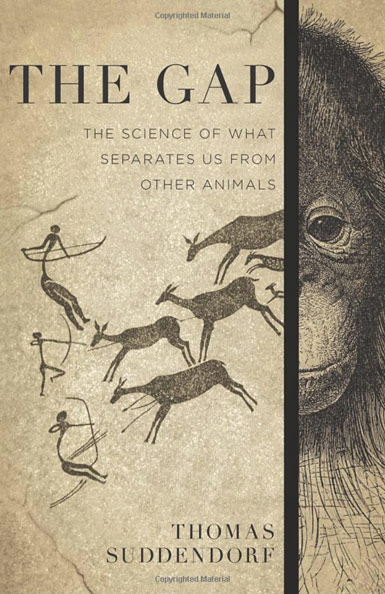
Homo Floresiensis: The Hobbit
Evidence of this tiny island species suggests it’s less about the size of the brain, and more about how the brain is organized.
In 2003, the remains of a 30-year-old woman were found on the isolated Flores Island east of Java. She was very small—standing only about three feet tall, about the size of a chimpanzee, with a brain size about one-third of our own and half the size of H. erectus. She was named Homo floresiensis and subsequently dubbed “the hobbit.”
H. floresiensis is a separate hominin species that lived in Asia. It, and not H. erectus, may have been the first hominin to migrate out of Africa.
Other remains were found in subsequent excavations, yielding evidence of about seven people, all similarly tiny. Their remains were found together with stone tools of proportionately small size as well as evidence of the use of fire and of sophisticated, cooperative hunting techniques.
It was originally thought that Homo floresiensis must have evolved from Homo erectus (the only other early human known to have lived on the Java mainland), migrated to the island, and evolved there into a smaller species as an adaptation to the island’s limited resources. This phenomenon, which scientists call “island dwarfism,” is common in the animal world but had never been seen in human evolution.
The biggest challenge to this theory was Homo floresiensis’ small brain. If Homo floresiensis evolved from Homo erectus, this would be a major departure from the general evolutionary trend that the human brain grew over time.
A study led by Dr. Debbie Argue of Australian National University’s School of Archeology & Anthropology concludes that there is no evidence for the theory.
The study used 133 data points from skull, jaws, teeth, arms, and legs and showed that, on the family tree, Homo floresiensis was most likely a sister species of and shared a common ancestor with Homo habilis, the first species to be called Homo that evolved in Africa between 2.5 and 1.8 million years ago.
“It’s possible that Homo floresiensis evolved in Africa and migrated, or the common ancestor moved from Africa then evolved into Homo floresiensis somewhere,” says Argue.
She says the analyses could also support the theory that Homo floresiensis branched off even earlier in the timeline, more than 1.75 million years ago. “If this was the case Homo floresiensis would have evolved before the earliest Homo habilis, which would make it very archaic indeed,” she said.
Homo floresiensis was thought to have co-existed with modern humans in the region for tens of thousands of years. However, more recent excavations and analyses show this not to be the case. It appears that “the hobbit” may have become extinct just before or just after modern humans arrived on the island. The skeletal remains of Homo floresiensis are between approximately 100,000 and 60,000 years old, while stone artifacts reasonably attributable to this species range from about 190,000 to 50,000 years old. This would mean that there was no long period of overlap between the two species; and that they may not have overlapped at all.

The Gap
The Science of What Separates Us from Other Animals
Thomas Suddendorf
A leading research psychologist concludes that our abilities surpass those of animals because our minds evolved two overarching qualities.

Before the Dawn
Recovering the Lost History of Our Ancestors
Nicholas Wade, New York Times
New York Times science writer explores humanity’s origins as revealed by the latest genetic science.
